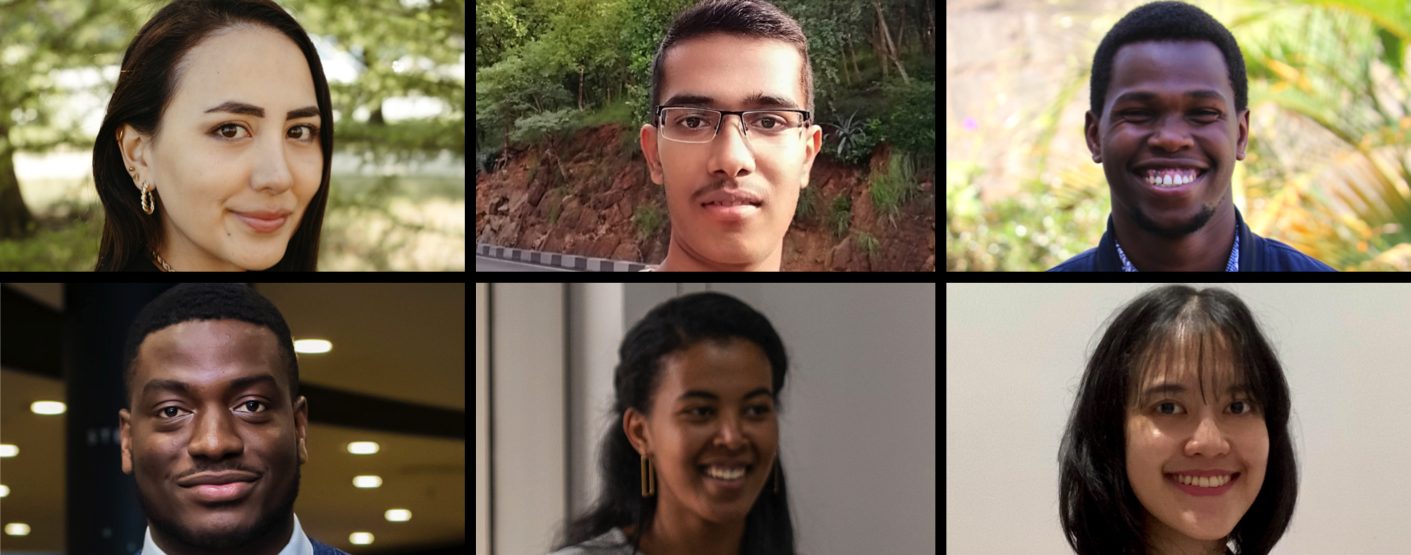
Since 2021, the Autodesk Foundation has been facilitating partnerships between its global portfolio of nonprofits and startups and Engineering for Change (E4C). This year, 29 tech-savvy young professionals from around the world partnered with the Autodesk Foundation’s portfolio to promote sustainable solutions across industries, including design and manufacturing (D&M) and architecture, engineering, and construction (AEC).
E4C Fellowship projects span industries and applications—from training the next generation of building automation professionals to bringing circularity to the textile industry—across all three of the Autodesk Foundation’s impact opportunity areas: Energy & Materials, Health & Resilience, and Work & Prosperity. The 2023 E4C Fellows used Autodesk technology donated through Autodesk’s Technology Impact Program to address design and engineering challenges, and some provided programmatic and editorial support like expanding the curriculum for specific programs.
Wondering what six of these up-and-coming E4C Fellows accomplished in five months? Read on!
Building support for mass timber through technology
BuildX Studio | Ginani Utami
Health & Resilience in AEC
The built environment accounts for roughly 42% of global CO2 emissions. BuildX Studio’s XLT-Nairobi project in Kenya is a demonstration building, highlighting mass timber’s potential to reduce the embodied carbon footprint and environmental impacts throughout the building’s lifecycle.
Architect Ginani Utami assessed XLT-Nairobi’s lifecycle using Tally, a Revit plug-in, and gathered data to show how cross-laminated timber (CLT) used in the project has a smaller carbon footprint than conventional building materials like concrete and steel. Utami utilized Tally’s online resources to learn the software and BuildX’s information on the building materials and designs as inputs for the plug-in.
Utami’s results showed XLT-Nairobi’s global warming potential is 65.6% lower than the standards outlined in the United Kingdom’s commercial office building regulations of 2017 and meets the 2030 target highlighted in the LETI Embodied Carbon Primer.

“Tally is powerful! The analysis is comprehensive—it doesn’t just evaluate carbon emissions; it also assesses acidification and how that impacts soils and oceans. This creates an accurate analysis of the environmental impact of building performance, a trend the industry is increasingly prioritizing in building design.”
— Ginani Utami, MASc Global Urbanism Candidate, University College London; 2023 Engineering for Change Fellow
Bringing circularity to the textile industry
The Industrial Commons | Arianna Andino
Work & Prosperity in industry, research, and ecosystems
The United States discards more than 34 billion pounds of used textiles annually, 66% of which goes straight to landfills. Material Return, a social enterprise of The Industrial Commons (TIC), collects this waste and repurposes it. The TIC team considered how to bring their understanding of circularity in textile manufacturing to another industry: construction.
Arianna Andino, an industrial engineer, collaborated with TIC to research the transformation of textiles into new building materials. “There’s a huge opportunity here because traditional insulation products rely on non-renewable materials such as polymers,” says Andino.
Andino researched different building materials repurposed from textile waste and determined that insulation was the best option for TIC. Andino compared existing eco-friendly insulation sold in the US, identified the optimal material composition for TIC’s new insulation, and worked with partners to develop its supply chain.
TIC is now equipped to pilot a trial run and assess the performance and durability of its insulation in the field.
Improving greenhouse yields through software modeling and analysis
Kheyti | Ogechi Ogbonna
Health & Resilience in D&M
Roughly 100 million smallholder farmers live and work in India, one of the most climate-affected nations in the world. With its low-cost, modular “Greenhouse-in-a-Box” design, Kheyti is helping India’s smallholder farmers become more climate-resilient—and financially secure.
With support from Ogechi Ogbonna, a structural engineer, Kheyti was able to enhance its existing modular greenhouse designs with better rain protection and a new trellising system for improved crop yields. Using human-centered design, Ogbonna implemented design improvements to the existing rain tunnel, incorporating new materials and customized solutions for both low- and high-rainfall regions. Ogbonna also designed two trellises: one attached to the greenhouse columns, and the other independent of the greenhouse structure. The trellising system improves plant growth through increased air circulation and sunlight penetration and decreases overcrowding and plant disease caused by vegetables growing on the ground.
Ogbonna modeled the trellises in Revit and exported the attached trellis to Robot Structural Analysis—to analyze the impact on the greenhouse—and the independent trellis to Fusion 360—to optimize the design. Although Fusion 360 was new to Ogbonna, he learned how to use it via Autodesk-enabled Eagle Point Software trainings and other online resources.
The attached trellis has the bonus effect of providing structural support for the greenhouse, which wasn’t surprising to Ogbonna. “That’s what simulation does for you,” he says. Kheyti is pursuing this trellis design because of its ability to meet safety and efficiency standards while offering more resilience to environmental factors and improved growing conditions for crops.

“Within a short period of time, I was able to learn how to use Fusion 360. The computation is fast because it’s cloud-based, and its tools help to save time on design iterations.”
— Ogechi Ogbonna, 2023 Engineering for Change Fellow
Training the next generation of building automation professionals
Stacks+Joules | Shakthi Dhar & Tunga Tessema
Work & Prosperity in AEC
Black and Latinx students are less likely to enroll in college than their white peers, but Stacks+Joules believes it doesn’t have to be this way. Stacks+Joules is on a mission to train traditionally excluded populations for careers in building automation by preparing them for real-world applications.
With support from Tunga Tessema, a software engineer, and Shakthi Dhar, an electronics and communication engineer, Stacks+Joules redesigned the hardware in its curriculum to make learning easier for the students and simplify setup for the instructor. This course teaches students to manage smart lightbulbs with Python code, but the current lightbulbs have become too expensive. After intensive research, Dhar and Tessema identified two options that reduce the lightbulb price by 50%.
The two E4C Fellows decreased the number of existing libraries from 40 to one, simplifying communication with the lightbulbs and making teaching easier for the instructor. Dhar and Tessema surpassed expectations by going a step further and adding extra learning modules to the program. The new modules help learners deepen their understanding and allow them to experiment with the hardware in different ways. In total, Dhar and Tessema updated or created eight practical exercises with codes, presentations, and demonstration videos.
Automating panelization of low-carbon building materials
BamCore | Symon Kipkemei
Energy & Materials in AEC and D&M
BamCore’s goal is to decarbonize the built environment through bamboo-based structural building components that decrease emissions by 2 metric tons of CO2e per home compared to traditional wood stud framing. BamCore transforms custom building designs from its clients into bamboo subcomponents ready to be assembled onsite. Part of this workflow is manually optimizing the bamboo subcomponents for machine cutting, a process BamCore calls “panelization.”
Symon Kipkemei, an architect, helped BamCore reach its goal of automating at least 80% of the panelization process. Before diving into coding, Kipkemei familiarized himself with the scope, constraints, and parameters to ensure that the panels meet structural integrity requirements and are in an optimal position for machine cutting. He used Python and C# as his main development languages to design and test the logic and integrate with Revit API and Macro Manager.
Kipkemei encountered some hurdles but kept a positive attitude. “You don’t just focus on making it work, you make it fun,” he says. Only a few months into the project, Kipkemei developed a working code to automate 84% of the process, leaving him plenty of time to document the process and refactor it for increased speed and efficiency. Automation has reduced the panelization process from hours to minutes, saving BamCore time and money.
Meet the Autodesk Foundation portfolio of nonprofits and startups using design and engineering to address environmental and social challenges.